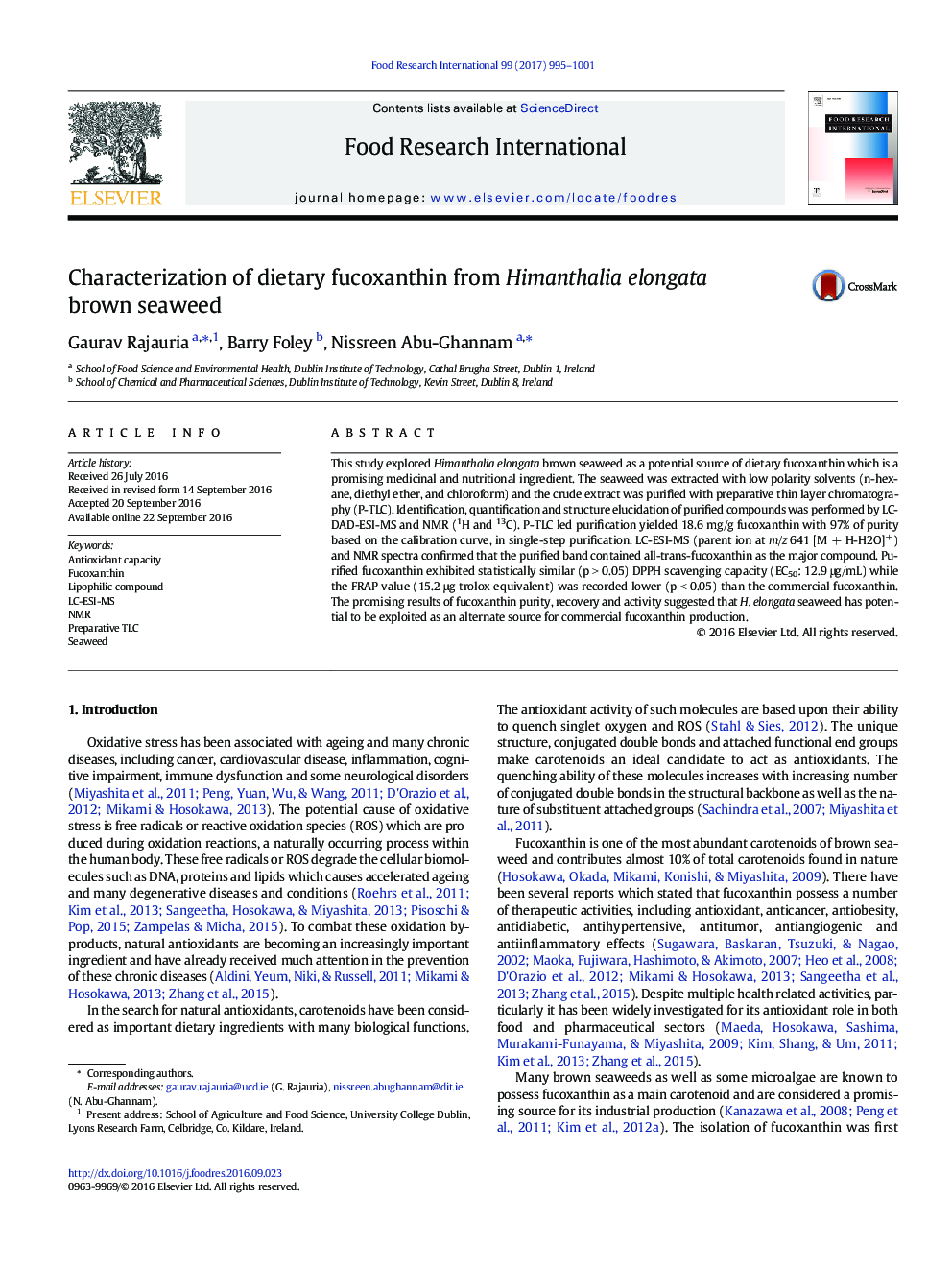| Article ID | Journal | Published Year | Pages | File Type |
|---|---|---|---|---|
| 5768055 | Food Research International | 2017 | 7 Pages |
â¢Fucoxanthin is successfully purified and characterized from H. elongata seaweed.â¢Extraction was carried out with a mixture of n-hexane, diethyl ether and chloroform.â¢Preparative TLC led purification yielded 18.6 mg/g fucoxanthin with 97% of purity.â¢Characterization of purified fucoxanthin was carried out by LC-ESI-MS and NMR.â¢Both purified & commercial fucoxanthin showed similar (p > 0.05) antioxidant capacity.
This study explored Himanthalia elongata brown seaweed as a potential source of dietary fucoxanthin which is a promising medicinal and nutritional ingredient. The seaweed was extracted with low polarity solvents (n-hexane, diethyl ether, and chloroform) and the crude extract was purified with preparative thin layer chromatography (P-TLC). Identification, quantification and structure elucidation of purified compounds was performed by LC-DAD-ESI-MS and NMR (1H and 13C). P-TLC led purification yielded 18.6 mg/g fucoxanthin with 97% of purity based on the calibration curve, in single-step purification. LC-ESI-MS (parent ion at m/z 641 [M + H-H2O]+) and NMR spectra confirmed that the purified band contained all-trans-fucoxanthin as the major compound. Purified fucoxanthin exhibited statistically similar (p > 0.05) DPPH scavenging capacity (EC50: 12.9 μg/mL) while the FRAP value (15.2 μg trolox equivalent) was recorded lower (p < 0.05) than the commercial fucoxanthin. The promising results of fucoxanthin purity, recovery and activity suggested that H. elongata seaweed has potential to be exploited as an alternate source for commercial fucoxanthin production.
Graphical abstractDownload high-res image (85KB)Download full-size image
